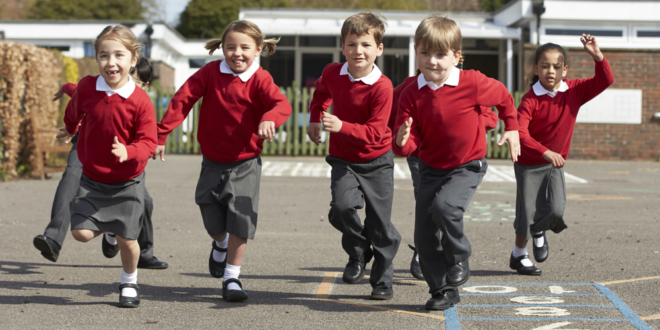Education Secretary Gavin Williamson has today announced the government’s guidance for schools to fully reopen in September, which has led to headteachers complaining of “mind-boggling” practical difficulties and unions to call for “clear guidance” from the government.
The government has today unveiled new guidance for schools in England, giving few restrictions on how they will be able to operate when pupils return in September.
The guidance published by the Department for Education imposes only a handful of restrictions, chief among them that pupils should be divided into larger “bubbles” of entire classes or year groups, which in larger secondary schools could include hundreds of schoolchildren.
There are few other social distancing measures required within schools, with much of the guidance left to school leaders to interpret and apply – including recommendations about staggering the start and finish times of the school day, break and lunchtimes and hygiene routines.
School staff and pupils will not be required to wear face masks while in school, however children travelling to secondary school on public transport will be required to wear some form of face-covering while travelling.
Teachers are advised to “distance from each other and older students where possible”, but will be able to move freely between different classes and year groups. All school staff will be expected to return to school for work in autumn, as the new guidance will mitigate the risks of COVID-19 transmission.
Headteachers and school leaders have been quick to denounce the new measures.
Geoff Barton, the general secretary of the Association of School and College Leaders, said: “It will be immediately apparent to anyone reading this guidance that it is enormously challenging to implement. The logistics of keeping apart many different ‘bubbles’ of children in a full school, including whole-year groups comprising hundreds of pupils, is mind-boggling.”
Education unions have also reacted to the new guidance, with the National Education Union saying today’s announcement doesn’t address the concerns of school leaders, teachers, parents and pupils.
NEU joint general secretary Kevin Courtney said: “We are concerned that the government does not have a plan B if these guidelines do not work or if cases are higher by the time we get to September. That is why we have been arguing, via our 10-point Education Recovery Plan, for the government to find extra classroom space, mobilise supply teachers, beginner teachers finishing college, and those colleagues who have left the profession. If the government could build and staff the Nightingale hospitals then it should be able to build and staff Nightingale classrooms to ensure our children can get back to school.
“School leaders need clear guidance based on scientific evidence, but instead they are confronted by a government which is rushing through ideas that seem more based on hope than on science. A poor plan, such as this one, risks failing children, parents and staff alike. We need much clearer science as well as guidance that is grounded in reality, for the full return of all pupils to work. As ever, the National Education Union is ready to talk with the government to find a way forward.”
NASUWT general secretary Dr Patrick Roach said: “Without a clear plan from the government, there is still a risk of further confusion and uncertainty. The government’s guidance for the full reopening of schools is predicated on the assumption that virus transmission rates will continue to fall.
“However, there will be many questions for parents and for teachers and other staff working in schools about safe reopening, which is what we all want to see. The government will need to provide clarity in response to the latest evidence of virus transmission amongst under 18-year-olds which has contributed to the local lockdown in the city of Leicester.
“The scientific basis underpinning the government’s decision to relax protective measures in schools also needs to be explained, including the decision to expand pupil bubbles to include entire year group cohorts.
“It remains essential that teachers with underlying health conditions, including clinically vulnerable and clinically extremely vulnerable staff, are not put at risk as a result of the decisions taken by schools on full reopening.”
UNISON head of education Jon Richards said: “Everyone wants all children to return to the classroom as soon as possible. There are still issues, though, around staffing and safety. Test and trace must get a whole lot better for social distancing to be reduced and large pupil ‘bubbles’ to become the norm. Otherwise, whole year groups would have to isolate when a child gets ill.
“There also must be guarantees teaching assistants don’t become permanent substitute teachers. Some have been filling in gaps left by staff going sick with Covid-19 or shielding. But this can’t be the case long term – teaching assistants aren’t trained as teachers, nor paid to do their jobs.
“Vulnerable pupils and those with special educational needs should be a priority. Staff want to get back working with these children, but social distancing is a challenge.
“Risk assessments are vital to ensure staff are protected from infection. Yet the government has largely ruled out using personal protective equipment.
“Telling schools just to get on with it isn’t the way forward. Instead, ministers must work with school staff and unions to agree safe ways of getting pupils back to the classroom.”






Facebook Comments